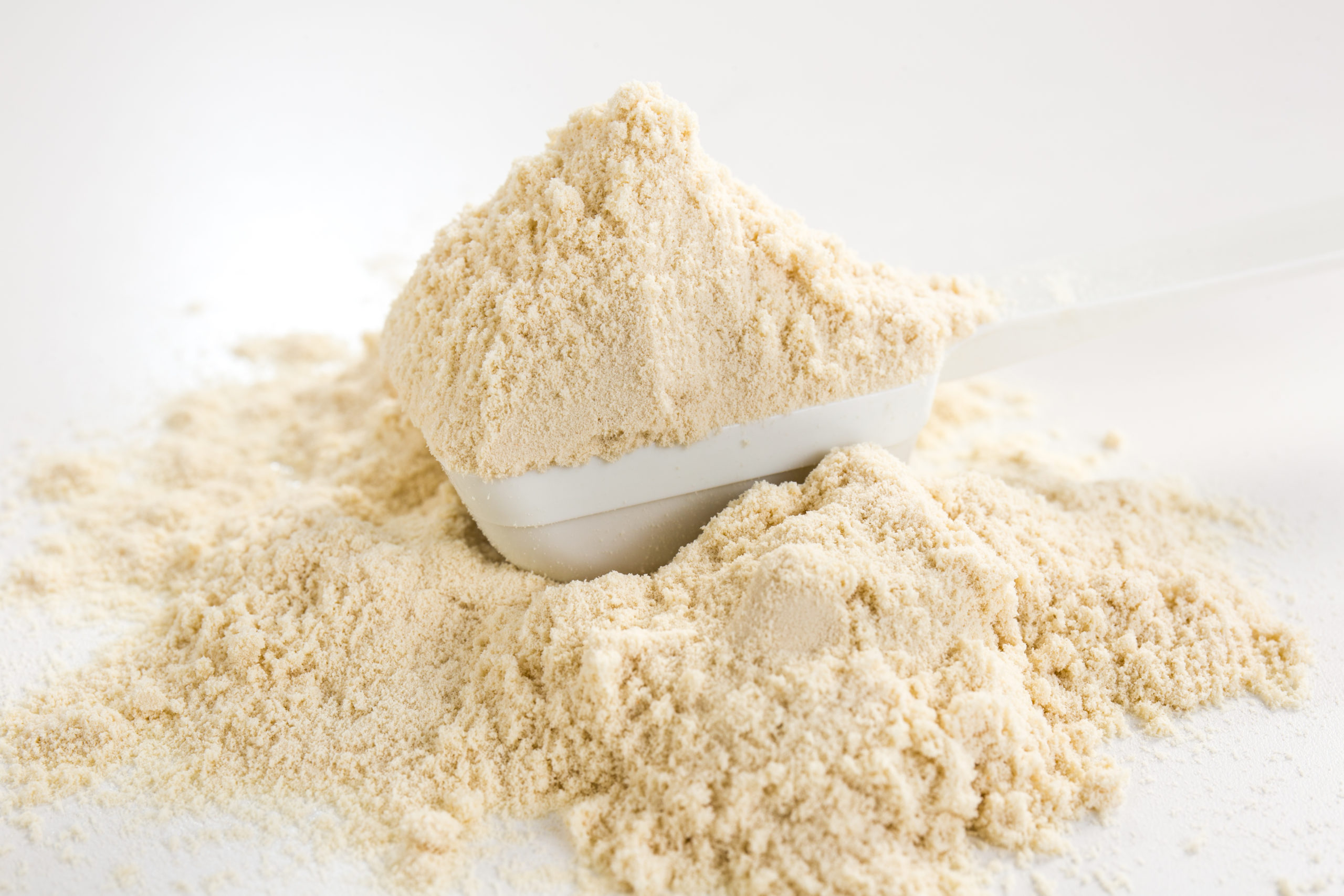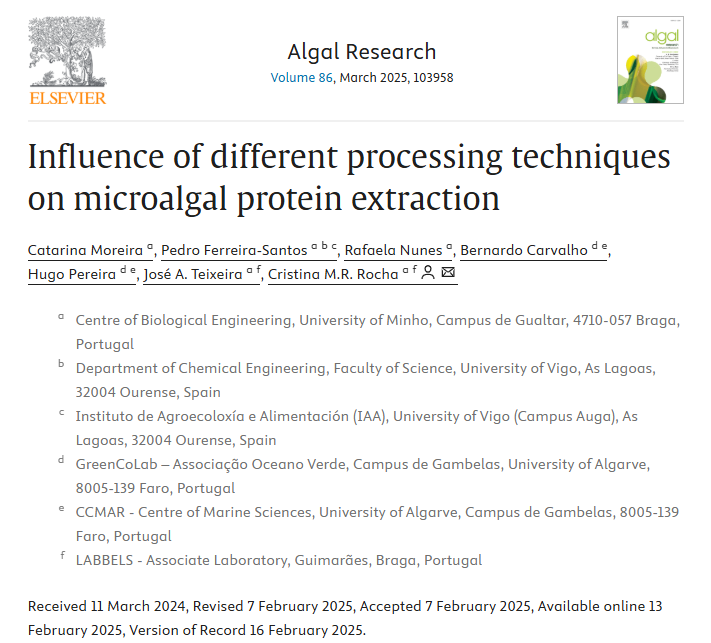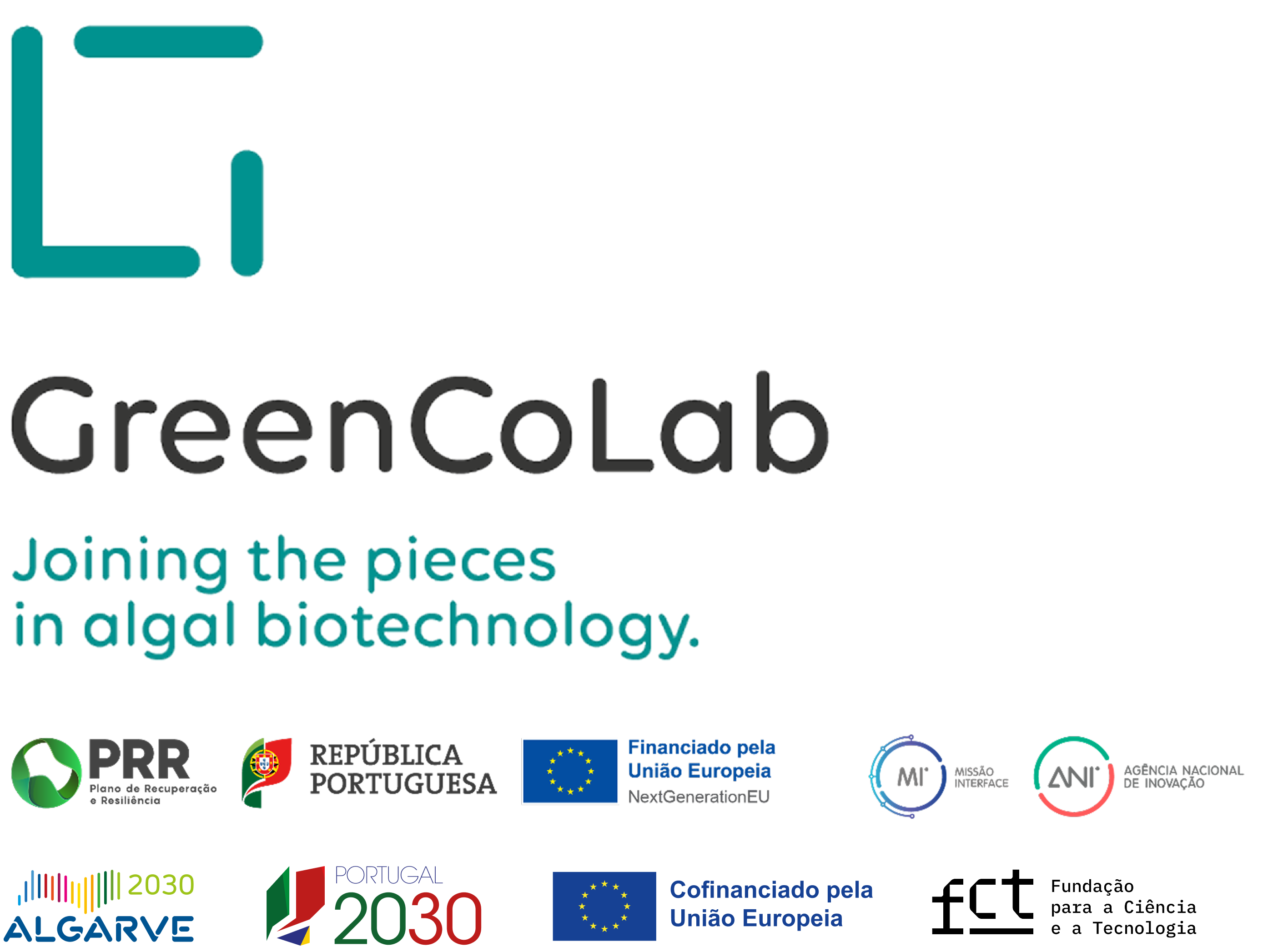

TITLE
Influence of different processing techniques on microalgal protein extraction
JOURNAL
Algal Research
AUTHORS
Catarina Moreira, Pedro Ferreira-Santos, Rafaela Nunes, Bernardo Carvalho, Hugo Pereira, José A. Teixeira, Cristina M.R. Rocha
ABSTRACT
The nutrient-rich composition of microalgae biomass positions it as a highly promising natural food ingredient. This holds the potential to not only enhance the nutritional value of various food products but also simultaneously alter their structural attributes.
This work investigated the effect of five protein extraction techniques such as freeze-thawing, enzymatic-assisted extraction, high-pressure homogenization, ultrasounds-assisted extraction, and pH adjustment (pH 7, pH 10, and pH 13) in protein yield, and subsequente cell and protein structure of three microalgal suspensions, namely, Chlorella vulgaris, Nannochloropsis oceanica, and Tetraselmis chui.
In Chlorella vulgaris, freeze- thawing and high-pressure homogenization exhibited a higher effect in terms of protein yield (~26.60 g protein /100 g protein microalgae). The same occurred for Nannochloropsis oceanica with also ultrasounds-assisted extractions and pH 7 and 10 having a protein yield above 30 %. Tetraselmis chui was similar to Chlorella vulgaris (>20.00 g protein /100 g protein microalgae) for freeze-thawing, high-pressure homogenization and ultrasound-assisted extraction. Enzymatic-assisted had a the lower protein yield for all the three microalgae (<10.00 g protein /100 g protein microalgae). The majority of proteins extracted from Chlorella vulgaris samples had molecular weights exceeding 337 kDa, whereas proteins extracted from Nannochloropsis and Tetraselmis had molecular weights ranging from 5 to 50 kDa. α-helices occurred in proteins extracted from Chlorella vulgaris through freeze-thawing and enzymatic-assisted extraction, while Nannochloropsis and Tetraselmis only had β-sheet.
In conclusion, for optimal protein yield recovery, methodologies such as freeze-thawing and high-pressure homogenization are the most efficient across all studied microalgae. The method selected for extraction had a greater impact on both the protein yield and structure for spray-dried cells.
Back to Publications



